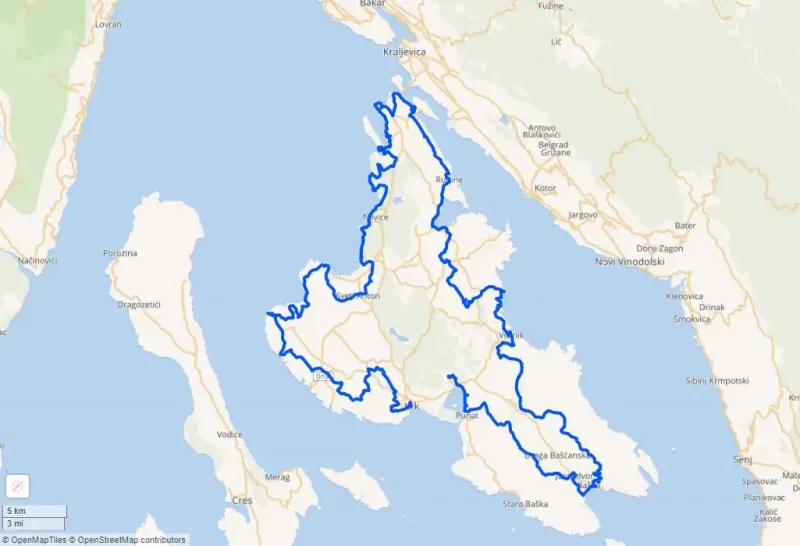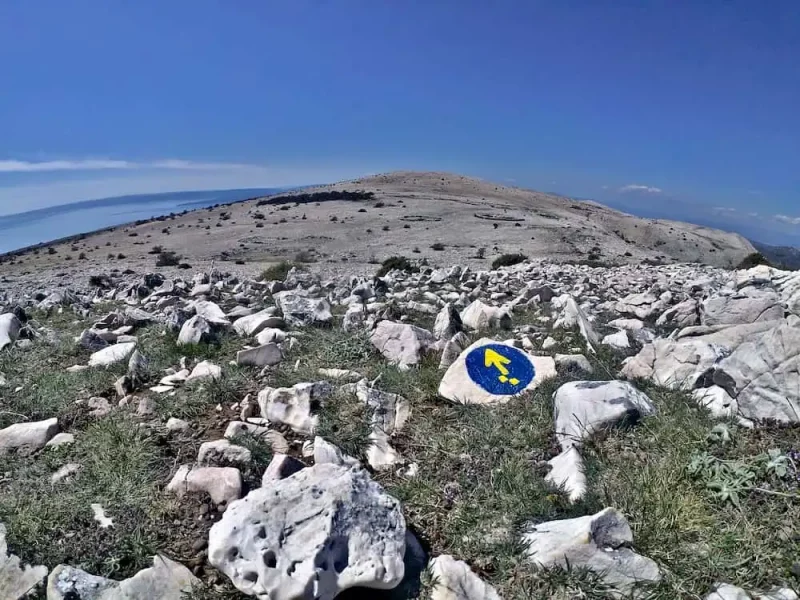Camino Krk – an impressive pilgrimage route with numerous sights
Table of Contents
Camino Krk is part of Camino de Santiago, also known as the path of St. Jacob is a network of pilgrimage routs, all together 800km long. It takes you to the word famous sanctuary in Galicia (Northwest Spain)- Santiago de Compostela where the tomb of the apostle St. Jacob was found.
In 1987. the Council of Europe has given it the title of “European’s main street”, and its Spanish and French part have been pronounced world’s cultural heritage by the UNESCO in 1993.
Camino Krk as a part of Camino de Santiago
Croatia is known for its pilgrimage tradition. Even though the network of the Camino paths is spread throughout Europe, up until recently, Croatia was among several European countries where the routs leading to Santiago de Compostela were unmarked.
The tradition of Camino goes back to 9th century, and Santiago is one the most visited Catholic sanctuaries, right after Rome and Jerusalem. Forming the pilgrimage route started shortly after the revelation of St. Jacob’s remains, and the first travel guide Code Calixtinus was published in 1140.
The first brotherhoods helping the pilgrims on their demanding hiking quest in Croatia appear after 1203. Revitalization of the pilgrimage tradition started during the 80’s, and today, the Camino route is taken by over 350.000 pilgrims a year.
150km of the circular Camino Krk island route
Revitalization of the medieval pilgrimage routs of the island of Krk and marking the Krk part of the Croatian Camino route took place between 2019. and 2021. Today, Camino Krk is defined as a circular island route. Over 150km long, it follows the infrastructure of existing hiking trails and cycling tracks.
The starting point is in the town of Krk, i.e. the cathedral of Krk in the centre f the island. The finishing point is in the parish church dedicated to the very apostle St. Jacob in the village of Kornić, which is more than suitable. Camino Krk takes place for 7 days, 7 pilgrimage chapters, that is. That is exactly how many days it takes to properly experience the historical, cultural and especially sacred heritage of the island of Krk surrounded by impressive natural ambiances and a unique urban complex.
The route is marked by a recognizable attribute of St. Jacob- a bright yellow stylised shell, a scallop, applied on dark blue background. Same as in the rest of Europe.

7 days of pilgrimage while discovering the sights of the island of Krk
Camino Krk unites the spiritual contemplation, specific for pilgrimages, with the pleasure of discovering islands historic, cultural and natural treasures:
Day: 1 Krk- Brzac (23km)
Day 2: Brzac- Malinska (22,9km)
Day 3: Malinska- Omišalj (19km)
Day 4: Omišalj- Čižići (21km)
Day 5: Čižići- Vrbnik (21,6km)
Day 6: Vrbnik- Baška (23,3km)
Day 7: Baška- Kornić (21,4)
Among many sights the pilgrims get to know on Camino Krk, a complex in the old town of Krk consisting of the cathedral and the dual church of St. Quirinus and St. Margaret takes a special place. This significant example of the island’s sacral architecture is a part of first day of the route.
On day two, above the Čavlena bay you will visit the little church of St. Chrysogonus, as well as the convent of the third order of Franciscans and the church of St. Mary Magdalene in Porat. The third day is marked by an impressive basilica, an example of the early Christian sacral architecture, situated near Omišalj.
On the peninsula of Vošćica, on day four, you will get a chance to see the Maltempo fort. It was built by the Venetians in order to better supervise the marine traffic in the nearby Tihi channel.
On day five it is time for the Romanesque church of St. Vitus in Sv. Vid Dobrinjski, known for the massive stone bell tower at the front. On the same day you get to visit the Gradec castle, the first property of the old Croatian noble family of Frankopan, as well as the cradle of early Croatian writing- Glagolitic- Vrbnik. This picturesque town is situated on the top of a steep cliff above the sea, and the old town hides many sights, like the most narrow street in the world- Klančić.
On day six the pilgrims get to experience walking around the karst area of Baška, resembling a rocky desert or the surface of the moon, which it was named after- the Moon plateau. The last day, day seven, is the time for the Glagolitic path of Baška, then the complex known for the stone tablet of the altar barrier known as the Baška tablet- the abbey of St. Lucy in Jurandvor, and finally, the beautiful island of Košljun, situated in the middle of the picturesque bay of Puntarska draga. Among mentioned, Camino Krk offers a lot more sights and beauty.

Pilgrimage passport and the certificate
The pilgrims that go through the whole Camino Krk route shall receive the pilgrimage passport, i.e. Credential del Peregrino, as well as Compostelo, i.e. the pilgrimage certificate that stands as the official document of the pilgrimage taken. The documents are issued by the Croatian brotherhood of St. Jacob, and they can be taken in the tourist- information centres all over the island, free of charge.
Assistance for pilgrims
300 new Camino marks have been placed all over the route along with around 100 additional marks with directions. The starting and finishing points (Krk and Kornić) have multilingual information boards. Also, multilingual descriptions of each of the seven pilgrimage days have been created on the Internet site Camino through Croatia: caminocroatia.com.
The route can be tracked via GPS file and Maps.Me app (for Android and iOS platforms) on your smartphones.
After all you have read, there is nothing else left but to choose the time of arrival, reserve accommodation and dive into all the natural and spiritual beauty of the Camino Krk route. Come to us with confidence, we would love to help you organize a magical pilgrimage journey to remember.